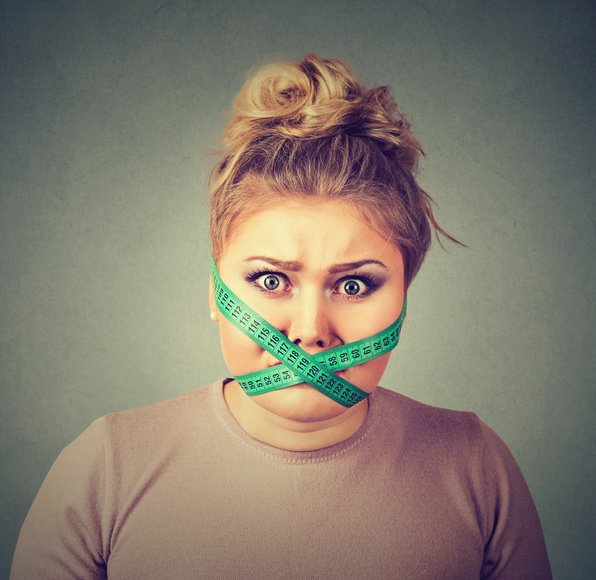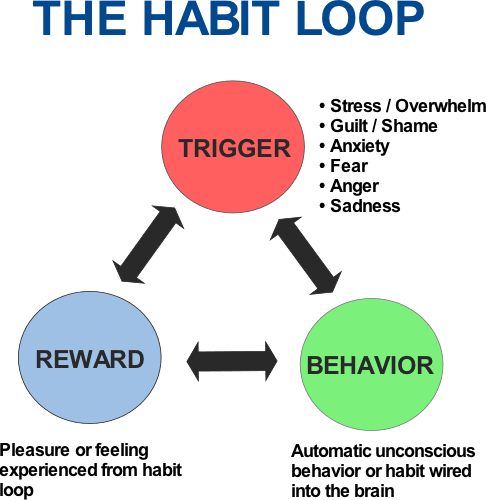
Your probably here because you’re searching for answers, answers on how you can make your life easier and better by changing those nasty habits into health promoting ones. So let’s begin by talking about our brains, memories and habits, how they are formed and how we can break them. Generally speaking our memories are distributed through out our entire brain, however the part of the brain where our habits are stored is called the Basil Ganglia, and the area in the brain where new memories are created is in the cortex which includes the hippocampus. The very interesting thing is that a person can have brain damage in the cortex and hippocampus where new memories are created, but if the Basil Ganglia is still healthy and functioning, the person will still be able to form new habits even though they can’t retain any new memories. What this means is that they will have no memory of how they formed a new habit, nor will they be aware they have the new habit, but this but non the less any new habits they formed along with old habits prior to the brain damage will continue on. Now let’s talk about how a habit is formed.
In order to understand how habits are formed we can look at the brain as a sort of pattern recognition system and habits as an ongoing hardwired loops in the brain. There are three components to a habit; a trigger, a pattern of behavior and a reward. The trigger is first thing that comes in the habit loop. A trigger could be anything from a familiar smell, a situation or emotional trigger such as overwhelm, or even a visual trigger like a cookie. Once we become triggered, the brain then automatically scans itself for what pattern it already has stored from our previous experiences that it feels will be most effective to use in that situation. All of this is happening out of our awareness, in our unconscious minds. This is our brains way of being efficient. The brain then follows the routine it has stored for the particular situation it is reacting to. The routine is has stored can be a physical, mental or emotional pattern of behavior. And finally the reward is the third component in the habit loop. The reward is usually why our brains created that habit in the first place. So the loop is as follows Trigger > Automatic pattern or routine carried out > Reward.

The more we enact a particular pattern of behavior, the more powerful it becomes, until eventually the trigger and the reward become intertwined and create a craving so then the habit loop becomes. Trigger and craving > Pattern of behavior > Reward.
It’s important to know that when the brain goes into habit mode, there is no decision making process going on because our brain is using our attention for other tasks. Any behavior we repeat over time gets hardwired into our brains and becomes an automatic habit. So with habits, unless you conscientiously break them by creating and carrying out new routines in lieu of the habit, and repeat these new routines often until they become a new habit, the old habit will remain on auto pilot. This way of changing a habit can be the hardest because it takes a lot of time and awareness on our part.
The unfortunate thing about our brains is that it can’t tell the difference between a good habit and a bad habit. The way our minds work, and how a habit is created is based on a very simplistic principal, and that is that behind every habit or behavior there is some need we are trying to get met for ourselves, to which there is some reward at the end of it all.
And as I said earlier, the brain doesn’t make the distinction between a good or a bad habit, all it knows is there is a need that we have to get met, and a reward at the end of it all.
Let’s look at the example of emotional eating, specifically junk food. The reason I say junk food is because brain scans have shown us that sugary foods that have a high carbohydrate content with lots of fat will go straight to the pleasure centers of the brain called the Nucleus Acummbens in the very same way that cocaine or heroine do, only it takes slightly longer. So we can call junk food the reward. Let’s now look at the trigger. A trigger can be anything from the time of day, an emotional feeling, a smell or even something we see. So to give you an example, a lot of people are fine with their eating habits during the day, but when they come home at night, well that’s a different story, most often they tend to eat dinner, and then continue eating un-necessarily for the rest of the night. If you ask them why they do this, they have no idea, because at this point it is an automatic habit and they have no idea what they are trying to do for themselves through the behavior of overeating. However when I work with people by relaxing them and having them become aware of the emotion behind the craving, they will usually tell me it’s something like overwhelm, or a need to stop thinking about work, or a need to just relax and unwind and take time for themselves.
The problem with a habit is that once it has been created, and is getting our needs met, and we are rewarded, the habit will continue to run on automatic until it’s been updated. Going back to the habit of eating junk food in the evening, the need may be getting peace of mind, and the reward that comes with eating junk food is us being put into a pleasurable and relaxed state. The only problem with eating junk food is that need isn’t getting met in a healthy way, because eating junk food every night leads to health consequences such as diabetes and weight gain. Once again though your brain will not make the distinction between a healthy habit or bad habit, it just scans the way we have learned through our past experiences to get our needs met. Think of how often eating to feel better has been programmed into us? From the very first moment we skin our knees as a child, our mothers hand us a cookie to make us feel better and stop the hurt. Families celebrate and bond through having meals together. In almost any chick flick when a woman has gone through a bad break up or is heart broken there is the proverbial scene of her eating a tub of ice cream while crying.
Now let’s have a look at how to break the habit loop, there are two ways you can do this, and that is consciously, through becoming aware of the habit loop and disrupting it in the trigger phase – this is the long and hard way, the second way is through crushing the reward feeling which I do with my weight loss hacks, this is where we no longer make the reward feel good, and this completely busts that habit loop out of the brain once and for all so that the person is no longer triggered.
So now onto the nitty gritty of breaking a habit. The hard way to break a habit as mentioned earlier, is to sit down and think about what the trigger is, how we are rewarding ourselves, the pattern of behavior that’s being carried and the need we are trying to get met for ourselves. You then need to conscientiously create a new way of responding to being triggered, along with a new behavior you wish to carry out that gets your need met. Again hard – to much work!
The easy way to break the habit loop by crushing the reward feeling and making it unpleasant, I like to do this by using the power of disgust which is what I do with my clients I see on a one to one basis. The process is also in my weight loss hacks product if you would like to do this with a friend. When you use the power of disgust, other wise known as aversion therapy you will find that you are simply no longer triggered in the same way, and it is much easier for you to be around the food or other addiction you once experienced. Most people report feeling indifferent to it. With the urge gone this leaves room to install new and healthy habits where those old ones once where.
This process is simple and can be done with a friend in literally 5 minutes and you will find get astonishing results that will have many benefits for you in your life.
With Weight Loss Hacks 101 you will learn how to do 5 different processes that interrupt the habit loop so you are no longer triggered to do things or eat things that were unhealthy for you.
If you would like to order the video tutorial which comes with a manual you can go to: www.weightlosshacks101.com
Hi! I am a robot. I just upvoted you! I found similar content that readers might be interested in:
http://brainhacks101.com/the-neuro-science-of-habits-how-they-are-created-and-how-we-can-break-them/
Downvoting a post can decrease pending rewards and make it less visible. Common reasons:
Submit
Hello @didiverg! This is a friendly reminder that you have 3000 Partiko Points unclaimed in your Partiko account!
Partiko is a fast and beautiful mobile app for Steem, and it’s the most popular Steem mobile app out there! Download Partiko using the link below and login using SteemConnect to claim your 3000 Partiko points! You can easily convert them into Steem token!
https://partiko.app/referral/partiko
Downvoting a post can decrease pending rewards and make it less visible. Common reasons:
Submit